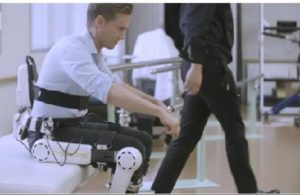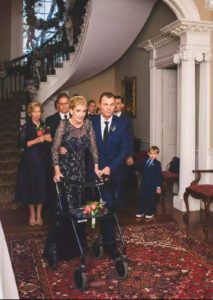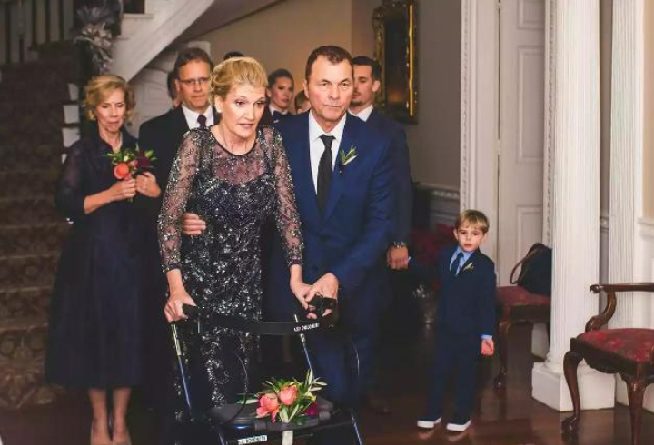I-Robot: Science Fiction Becoming Science Fact!! Find out More

“It came out of nowhere,”. I’d been fine and exercising every day, but it just started with tingling in my fingertips then progressed,” Sorensen says.
Kristen Sorensen was 55 when she became paralyzed from the neck down in October 2018 with Guillain Barre syndrome (a rare disorder that affecting the body’s nervous system), she never thought she would walk again.

Brooks Cybernic Treatment Center (Jacksonville, Florida), was the first US center to use a unique rehabilitative technology developed in Japan, known as Hybrid Assistive Limb (HAL).
HAL is a brain wave-controlled exoskeleton developed by a Japanese roboticist, Yoshiyuki Sankai.
Kristen Sorensen got her breakthrough moment when she heard that HAL was in town; nothing was going to get in her way. Sorensen was determined to walk at her daughter’s wedding later that year.
HAL is a wearable cyborg that helps those with spinal cord injuries and muscular dystrophy to regain movements as well as strengthen their nerves and muscles. It is a type of lightweight suit, with joints that are powered by small electric motors, which serve as mechanical muscle.
Patients use their brain waves to control the machine, and this grants them the opportunity of doing things they ordinarily are unable to do; either moving arms, legs or even walking.
The World Health Organization, WHO desires that more than 2 billion people over age 60 in years to come, will also benefit from this; offering solution to the world’s aging population.
With such huge potential applications available, the global medical exoskeleton market will be worth an estimated $2.8 billion by 2023, according to research company Markets and Markets.

Sorensen had quite a challenge when she first tried HAL however, a trained physiotherapist at the Brooks Center helped her fit the exoskeleton over her lower body, connecting her to sensors that help pick up faint bio-electric signals on the surface of the skin, which communicate a patient’s intention to move. Once these signals are received, HAL helps support the person’s movements.
As amazing as this may sound, one has to learn to walk first before he/she can run. Therefore, it is important to note that rehabilitation requires time, determination and the help of a physiotherapist as well as a body weight harness that ensures patients are supported and kept upright while they use HAL on a treadmill. The physiotherapists monitor in patient’s motions and the settings used (from walk to jog mode), and adjust accordingly to ensure naturality in their movements.
According to Sorensen, initially she felt like HAL was doing most of the work by helping induce her muscles to make small leg movements that mimic natural walking patterns, but then she found herself increasingly in control.
“After the first couple times, your brain connects to HAL, and I could see I was moving my legs myself,” she says. “It was just incredible; my heart was just bursting.”
Photo of Sorensen walking with assistance.
Watch video below:
https://cnnios-f.akamaihd.net/i/cnn/big/world/2019/09/18/caption/robot-cyborg-brainwaves-japan-ripley-pkg-vpx.cnn_2807061_ios_,440,650,840,1240,3000,5500,.mp4.csmil/master.m3u8?__b__=650
(By Miss Bimbo)
Photo &Video Credit: CNN.




